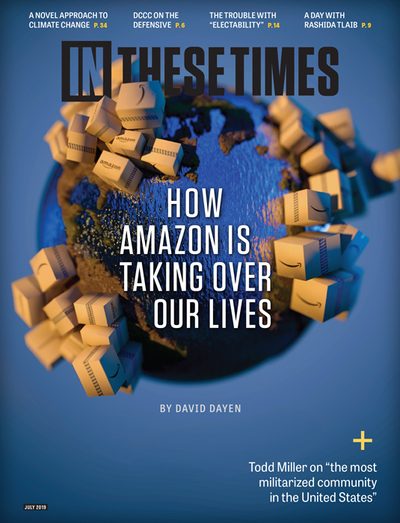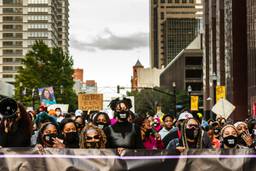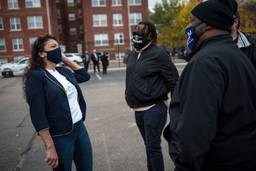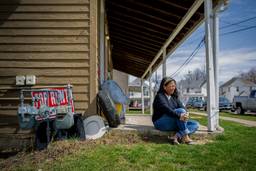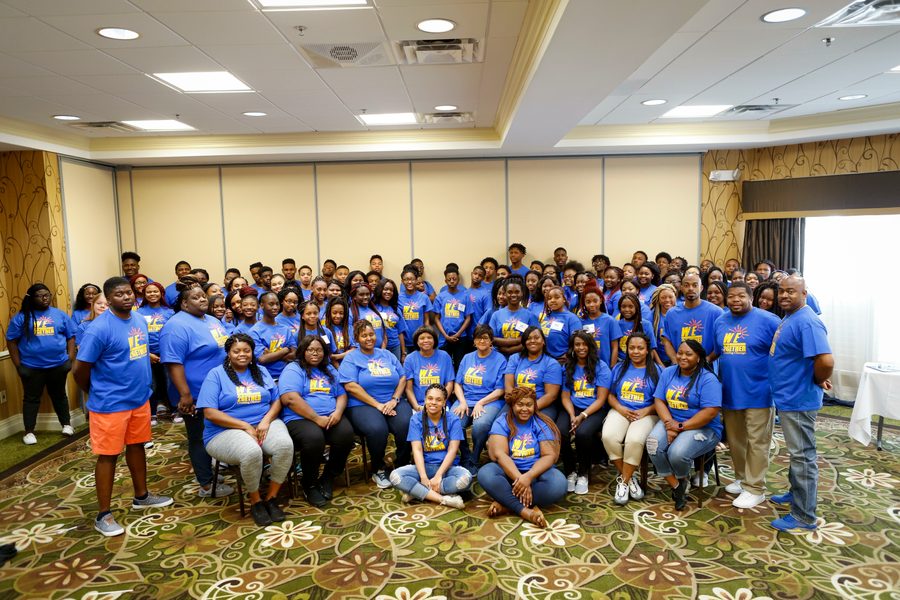
DREW, MISS. — Inside what was the city’s last remaining high school before it closed in 2012, Gloria Dickerson, 65, leads me through the hallways she and her six siblings integrated back in 1965, when she was 12. She describes how frightening it was to be the only black student in class, surrounded by white peers who would hurl racial epithets and tell her she didn’t deserve to be there.
The building now houses a food pantry run by We2gether Creating Change, a nonprofit community hub Dickerson founded in 2011. The organization provides food and civic and financial education in a poor and working-class black community that suffers from a poverty rate of 43.7%.
Dickerson attributes the lack of resources in Drew and other black communities to a long legacy of neglect and racist policymaking. “It all goes back to the struggle that African Americans have had because of slavery,” she says. “And the racism … the white supremacy.”
In the state of Mississippi, upward of 55% of the population was once enslaved. The Lower Mississippi River Valley had more millionaires per capita than anywhere else in the country in 1860 — wealth created by forced labor. After the Civil War, Black Codes criminalized so-called mischief, and vagrancy laws forced unemployed freed people into essentially unpaid labor, ensuring black people remained poor or in jail. By 1960, more than a third of black people in Mississippi still worked land they didn’t own. As In These Times has reported, the low percentage of black land ownership contributes to “limited job opportunities, low education levels and low population density.” Black people in Mississippi continue to win settlements for the discriminatory way the state hands out farm subsidies.
The discriminatory distribution of resources in the state is “more subtle now,” Dickerson says, from vastly unequal state funding for education to one of the country’s cruelest histories of incarceration. “ZIP codes that don’t have very many people in them, ZIP codes where the people are poor — those people are not getting their fair share,” she says.
Going to school with white children “wasn’t about being around them,” Dickerson says — it was an opportunity to reclaim resources owed to black students. “That’s what Mama kept saying … ‘That school is just as much your school as it is their school.’ It was about claiming … what we were entitled to.” Dickerson’s mother, Mae Bertha Carter, fought to end school segregation, most notably as a plaintiff in an NAACP lawsuit that in 1969 overturned Mississippi’s “freedom of choice” law, which discouraged black families from sending their children to white schools.
But educational resources are still lacking in Drew. In 2012, the state of Mississippi scrapped Drew’s public school system by merging three school districts into one. While state takeovers may help with budget issues, they also strip the locally elected school board of decision-making power and have not been shown to improve academic performance. The state may then choose to close schools, as was the case with Dickerson’s old high school, which state officials say was closed due to poor academic performance and a hard financial situation. School closures further impoverish communities by reducing graduation rates and laying off longtime teachers.
Organizations like We2gether are working hard to fill the gaps. Where the state has failed or refused to invest in the futures of young people, for instance, We2gether’s “$$$ For Your Thoughts” program provides scholarships to young people who set goals for themselves, such as graduating from high school. The organization also provides classes for youth on leadership development. A host of adult programs help participants access resources, find economic footing and launch community projects. The food pantry serves around 900 people every month.
We2gether hosts regular community meetings to discuss plans for the city, with attendance upward of 100 people. The Drew Collaborative, also founded by Dickerson, brings together roughly 20 representatives of civic organizations across the city to make collective decisions, often “based on input from the community.” The collaborative is currently developing plans for more affordable housing units and a grocery store, both of which have the city’s backing and are grinding through a long process for space and funding.
Asked about the change she’d like to see, Dickerson doesn’t hesitate to think big, from major leaps in public transportation and affordable housing to rebuilding health and education infrastructure. “I’m talking about real change,” she says. “Societal change. Systemic change.”

I hope you found this article important. Before you leave, I want to ask you to consider supporting our work with a donation. In These Times needs readers like you to help sustain our mission. We don’t depend on—or want—corporate advertising or deep-pocketed billionaires to fund our journalism. We’re supported by you, the reader, so we can focus on covering the issues that matter most to the progressive movement without fear or compromise.
Our work isn’t hidden behind a paywall because of people like you who support our journalism. We want to keep it that way. If you value the work we do and the movements we cover, please consider donating to In These Times.
ELI DAY was an investigative fellow with In These Times’ Leonard C. Goodman Institute for Investigative Reporting. He’s also a Detroiter, where he writes about politics, policy, racial and economic justice. His work has appeared in Vox, Current Affairs, Mother Jones, and the New Republic, among others.
